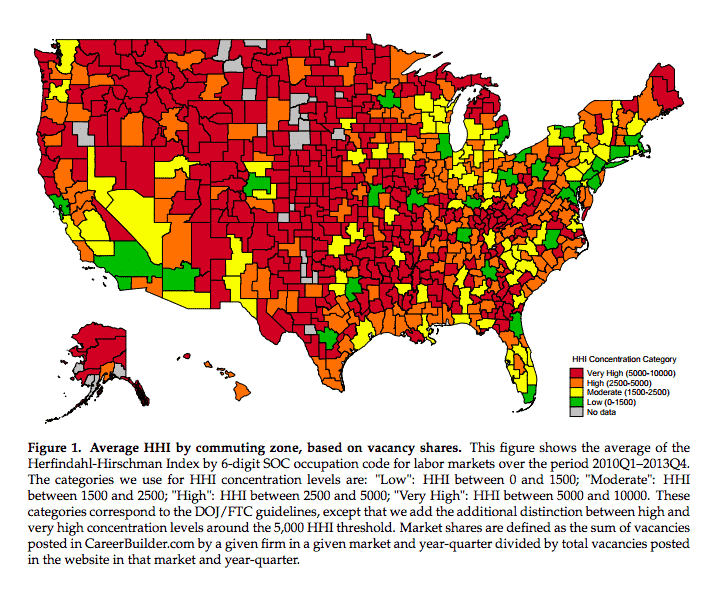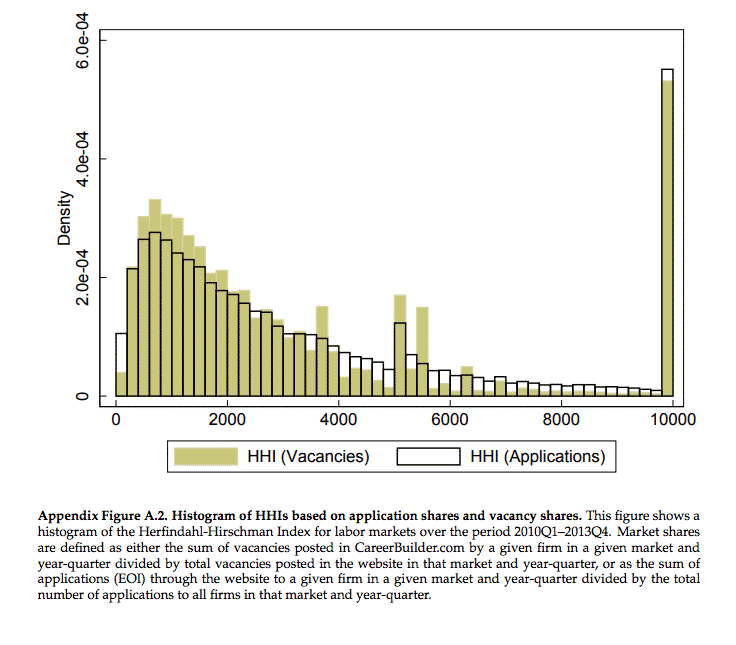Across much of America (and many other countries) the concentration of monopoly power in the hands of a handful of employers in local labour markets, gives them huge bargaining power in relation to workers, even when labour is scarce nationally.
It is an incredibly intuitive finding revealed by a recent NBER paper by José Azar, Ioana Marinescu, Marshall I. Steinbaum. Using data gleaned from America’s largest online jobs site CareerBuilder.com they show the extent of monopsony power (monopoly power enjoyed by a purchaser of goods or services) enjoyed by employers across much of the US.

The measure of concentration they use is the Herfindahl-Hirschman Index (HHI) index. It is a clever analytical and argumentative move. Usually HHI is used in anti-trust suits to measure concentration in product markets. The originality of the paper is that it applies the measures to another facet of corporate power: their power as purchasers of labour.
The results are stark. They show a truly dramatic concentration of labour market power in the hands of employers. Across thousands of labour markets the average HHI index based on advertised vacancies is 3157, well above the 2500 threshold that would raise anti-trust concerns in product markets. Based on applications rather than vacancies i.e. the jobs that people actually wanted, the HHI index was 3480. These were the averages including big city regions where many employers compete for workers. Outside the big cities the level of concentration rockets to 10,000.

Concentration matters because it is tightly related to wages. Higher concentration on the side of the employer makes for lower wages.

Any anecdotal experience of small town or rural life in America (or anywhere else) would confirm this result. Likewise the fact that investors seek out rural locations in which they can maximize their bargaining power, is a commonplace. But as the authors modestly state: “This paper provides for the first time to our knowledge a measure of labor market concentration for many of the largest labor markets in the US.”
All power to them!
